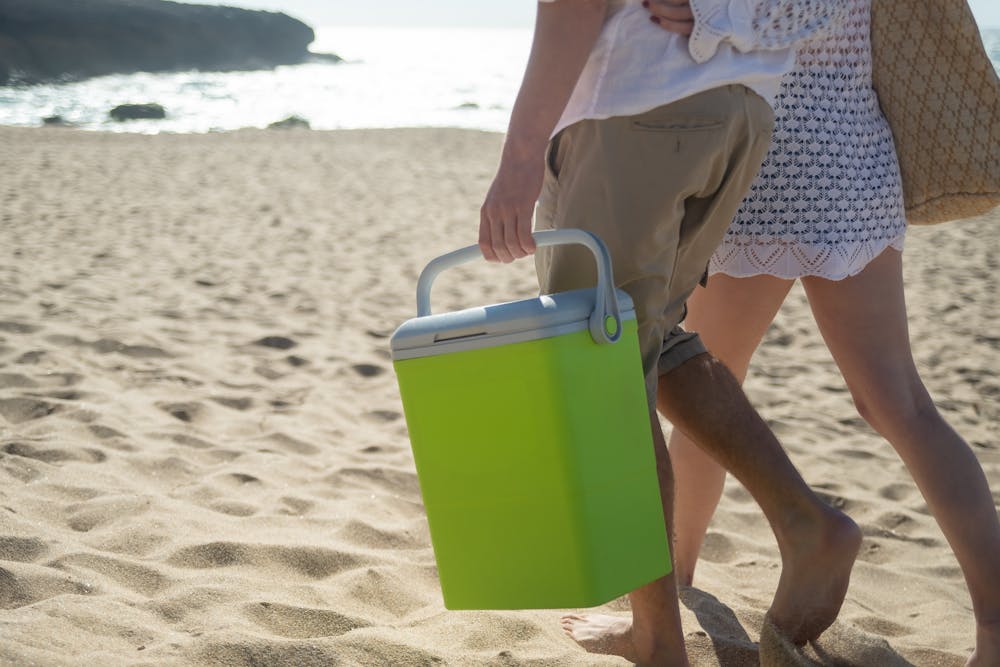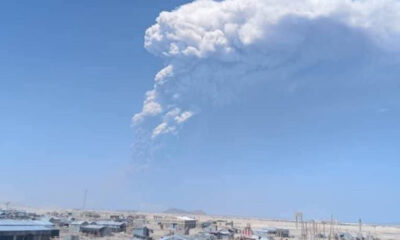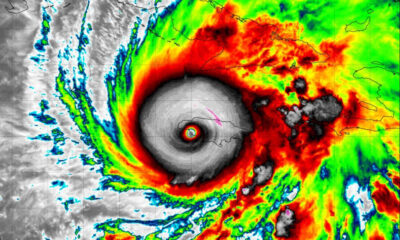Reviews
How to Pick the Right Insulated Soft Cooler for All Your Adventures

Imagine you’re gearing up for a beach day, a weekend hike, or a lakeside picnic and you need a portable cooler that keeps your drinks cold without adding extra bulk. Hard coolers can weigh you down and take up valuable space. An insulated soft cooler, a versatile soft sided cooler, offers reliable ice retention, packs flat when empty, and adapts to multiple carry styles, making it the best soft cooler for modern adventurers.
In this cooler buying guide you will learn how to choose a cooler and how to:
- Compare lunchbox, backpack, messenger bag and duffel cooler designs
- Balance insulation performance, capacity and weight
- Evaluate carry features and durable construction
- Understand real-world ice retention results
- Match the right cooler to specific activities
Ready to upgrade your gear? Let’s explore why an insulated soft cooler might be the perfect fit for your next trip.
Why Choose an Insulated Soft Cooler
Insulated soft coolers blend portable cooler performance with ease of use in ways hard coolers cannot. They weigh less, collapse flat, and offer versatile carry options. Overweight rigid boxes can bulk up your gear and strain your back. Soft coolers slip into backpacks, boat compartments, or car trunks without hogging space, making them essential in any outdoor cooler guide.
Lightweight Portability
Portable coolers made with closed-cell foam and durable nylon often cut pack weight by half compared to rigid boxes. Models like the AO Coolers 24 Pack weigh far less than similar hard-sided options while still holding ice for 24 to 48 hours.
Space-Saving Packability
Most soft coolers collapse or fold flat when empty. This flexibility lets you slip them into tight spots in your car hatch, backpack, or kitchen cupboard. It maximizes storage space on day hikes or road trips.
Convenient Features
Leak-proof zippers and waterproof exteriors protect against spills and moisture. Integrated shoulder straps, reinforced handles, and external pockets keep essentials within reach. These features make soft coolers ideal for beach outings, picnics, and as a soft cooler for travel.
Types of Insulated Soft Coolers
Soft sided coolers come in several styles to match different activities and capacity needs. Below is an overview of the most popular designs and their ideal uses, whether you want a lunchbox cooler, backpack cooler, messenger bag cooler, or duffel cooler.
Lunchbox Coolers
Lunchbox coolers hold up to 18 cans in a compact top-loading or flip-top design. Premium models like the Yeti Hopper Flip 18 use closed-cell foam and weatherproof zippers to keep ice for around 24 hours. Budget-friendly options such as the Carhartt Dual-Compartment Lunchbox add two insulated sections for meal separation, though they may cool for shorter periods.
Backpack Coolers
Backpack coolers distribute weight evenly across both shoulders and offer 25 to 35 liters of storage. Durable nylon exteriors resist abrasion, while padded straps, sternum belts, and exterior pockets improve organization on trails. The RTIC Backpack 30 pairs advanced insulation with ergonomic support, keeping contents cold for a full day of hiking or camping.
Messenger Bag Coolers
Messenger bag coolers combine a slim profile with a detachable shoulder strap for urban commuting or park outings. These tote-style designs use closed-cell insulation and leak-proof closures to maintain moderate cold life, usually 12 to 18 hours. Interior dividers and small accessory pockets enhance functionality in city or outdoor settings.
Portable Duffel Coolers
Duffel coolers fold flat when empty and feature dual carry handles plus a shoulder strap. With capacities from 20 to 40 liters, they suit picnics, beach trips, tailgating, and soft coolers for travel use. Many include exterior pockets for utensils or phones and use water-resistant fabrics to protect against spills.
Key Selection Criteria for Insulated Soft Coolers
Choosing the right soft cooler involves balancing insulation performance, size, carry options, and durability. By evaluating each criterion against your adventure needs, you ensure reliable ice retention and ease of use in the field. This section of our outdoor cooler guide covers what to look for.
Insulation Materials and R-Value
Insulation materials determine how long a soft cooler keeps contents cold. Closed-cell foam offers up to R-5 per inch, outperforming standard polyurethane (PU) or polyethylene (PE) foams. Some designs include a radiant barrier liner to reflect heat. Aim for at least one inch of high-density foam walls if you need 24 or more hours of ice retention on day trips, whether you seek the best cooler for camping or a portable cooler for travel.
Capacity vs. Weight Balance
Capacity influences both volume and carry comfort. Smaller soft coolers around 10 to 15 liters suit solo hikers or quick beach trips. Medium options (20 to 24 L) support group picnics without adding bulk. Larger designs (30 to 35 L) hold up to 30 cans but weigh more when loaded. Compare empty weight and volume and opt for models with higher liters-per-kilogram ratios for backpacking.
Sizing for Use Case
- Small coolers (10 to 15 L) suit solo day hikes or lunch runs
- Medium models (20 to 24 L) handle picnics with friends
- Large units (30 to 35 L) fit extended trips or group events
Weight Considerations
Look for a liters-per-kilogram ratio to ensure packability. For example, the AO Coolers 24 Pack weighs about 1.5 kg empty, while the Engel HD30 tips the scale at over 3 kg with similar volume. Seek a balance near 8 to 12 L/kg for multiday hikes.
Portability Features
- Padded shoulder straps for hands-free transport
- Sternum and hip belts to distribute load
- Molded top and side handles for quick lifts
- Adjustable duffel straps for over-the-shoulder carry
- Wheels and telescoping handles for heavy loads
- External attachment loops and mesh pockets for gear
Durability and Construction
Key elements include:
• High-denier 600D or 1000D fabric to resist abrasions
• Welded or sealed seams to prevent leaks
• Reinforced stitching at stress points
• Waterproof TPU liner to protect contents
• Molded base panels for stability
• Abrasion-resistant coatings on exterior
Closure Systems and Opening Styles
Closure style impacts leak prevention and ease of access. Common options include zipper closures with waterproof zippers for quick full-top access, roll-top closures that enhance seal and block drafts, latch or buckle systems for added security, hinged or clamshell lids for one-handed operation, and hybrid designs combining zippers and roll-tops for flexibility.
Real-World Ice Retention Performance
Since 2017, OutdoorGearLab has tested nearly 50 soft coolers, focusing on 23 top models in side by side trials. Testers loaded each cooler with 30 percent ice by weight, carried units on 5 mile hikes in 80°F to 100°F heat, and recorded ice volume every eight hours. This approach mirrors field conditions and shows the impact of insulation and seal design in our outdoor cooler guide.
Top Performers in Ice Retention
• Yeti Hopper M20: retained solid ice for 24+ hours
• Engel HD30: 20+ hours with a waterproof zipper seal
• AO Coolers 24 Pack Canvas: 18-20 hours while weighing 1.5 kg empty
• Arctic Zone Titan Deep Freeze 30: 12-15 hours on day trips at a budget price
Tips to Maximize Cooling Life
• Pre-chill the cooler before loading
• Use large block ice to slow melt
• Pack ice under contents and drain meltwater
• Keep the cooler shaded and limit lid openings
• Wrap the cooler in a reflective cover for extra protection
Use Cases and Matching Cooler Types
Selecting the right soft cooler depends on your activity. Here is how to match cooler types to common use cases, whether you need a soft cooler for travel, the best cooler for camping, or a soft sided portable cooler.
Day Trips and Picnics
For short jaunts to parks or urban green spaces, choose a lightweight 10- to 20-liter soft cooler. The AO Coolers 24 Pack Canvas weighs nearly half of an Engel HD30, making it easy to carry folded in a bike basket or under a stroller. For a premium option, the Yeti Hopper Flip 18 adds weatherproof zippers and a rigid base in a compact lunchbox design.
Camping and Hiking
On the trail, multi-function packs win. The REI Co-op Cool Trail Split Pack pairs an insulated compartment with dry storage pockets for layers and electronics. For longer backcountry treks, the Yeti Hopper M20 Backpack delivers high-quality insulation and padded straps, keeping contents cold for more than a day. This setup makes it one of the best cooler for camping picks.
Beach and Water Sports
Waterproof builds and floatable designs are key near water. The Engel HD30 uses a sealed zipper and rugged shell to resist splashes on a boat or shore. If you need a soft sided cooler that also floats, the IceMule Pro 33 doubles as a drybag, though ice life may run shorter under hot sun.
Tailgating and Events
High-capacity soft coolers simplify group service. The RTIC 52 QT Ultra-Light holds large drink volumes and rolls easily on grass. For heavy use, the Canyon Coolers Outfitter 55 Quart offers roto-molded durability and a lifetime warranty. Both options balance space and portability for events.
Travel and Road Trips
Compact cooler bags that fit in trunks or under seats keep snacks fresh. Wirecutter recommends models like the RTIC Soft Pack Cooler, sized for 20 to 24 cans, with easy-carry straps and streamlined profiles for tight vehicle spaces. This soft cooler for travel options works well on road trips.
Innovative Features to Enhance Your Adventures
Emerging tech and design tweaks take soft coolers beyond simple ice retention. Explore these extra features to customize your gear and enhance every trip.
Eco-Friendly Insulation Options
Some models use recycled fabrics or plant-based foam panels for lower environmental impact. The CleverMade Pacifica Collapsible Bag uses post-consumer plastic materials, offering durability with green credentials. This option shows how soft coolers can align with sustainable travel and outdoor practices.
Smart Sensor Integration
Bluetooth thermometers and companion smartphone apps let you track interior temperature in real time. Alerts warn when contents approach spoilage range, so you can refresh ice before food warms. This smart approach to cooling fits in a modern cooler buying guide.
Modular Accessories
MOLLE-style webbing, daisy chains, and bungee cords enable clipping on drink holders, dry boxes, and extra pouches. Arctic Zone Titan coolers include external loops and straps for custom gear setups. These add-ons turn a soft cooler into a versatile pack that adapts to any adventure.
Convertible and Multi-Functional Designs
Look for models with detachable straps, built-in bottle openers, removable dividers, or wheeled bases. Some flip into stools or tables, allowing you to use your soft cooler as gear, seating, or storage. This multi-functional trend highlights what to consider when you learn how to pick a cooler.
Conclusion
Choosing the right insulated soft cooler comes down to matching design, capacity, insulation, and carry features to your specific adventures. By using the criteria and insights in this cooler buying guide, you can pick a model that keeps your food and drinks cold without weighing you down or taking up extra space.
Key takeaways:
• Types and uses: lunchbox, backpack, messenger bag, and duffel styles fit different activities
• Insulation and R-value: aim for high-density foam and reflective liners for longer ice life
• Capacity versus weight: balance volume needs with packability and load comfort
• Portability and durability: look for padded straps, reinforced handles, and abrasion-resistant fabrics
• Real-world performance: use field test results and user tips to maximize ice retention
• Advanced features: explore eco-friendly materials, smart sensors, and modular accessories
Armed with these insights, you can confidently select a soft cooler that enhances every outing. Whether you’re hiking a mountain trail, lounging on the beach, or tailgating with friends, the right cooler will keep refreshment within reach. Pack smart, stay cool, and make your next adventure unforgettable.

-

 World2 days ago
World2 days agoEthiopian volcano erupts for first time in thousands of years
-

 Legal1 week ago
Legal1 week agoMichigan man JD Vance sentenced to 2 years for threatening Trump and JD Vance
-

 Politics1 week ago
Politics1 week agoU.S. to designate Maduro-linked Cartel de los Soles as terrorist organization
-

 Health1 week ago
Health1 week agoCambodia reports fatal H5N1 bird flu case in 22-year-old man
-

 Legal6 days ago
Legal6 days agoWoman in critical condition after being set on fire on Chicago train
-

 World6 days ago
World6 days agoHurricane Melissa registered 252 mph wind gust, breaking global record
-

 Politics1 week ago
Politics1 week agoEpstein survivors release PSA calling on Congress to release all files
-

 Legal5 days ago
Legal5 days agoSuspect in San Diego stabbing shot by authorities after fleeing into Mexico




